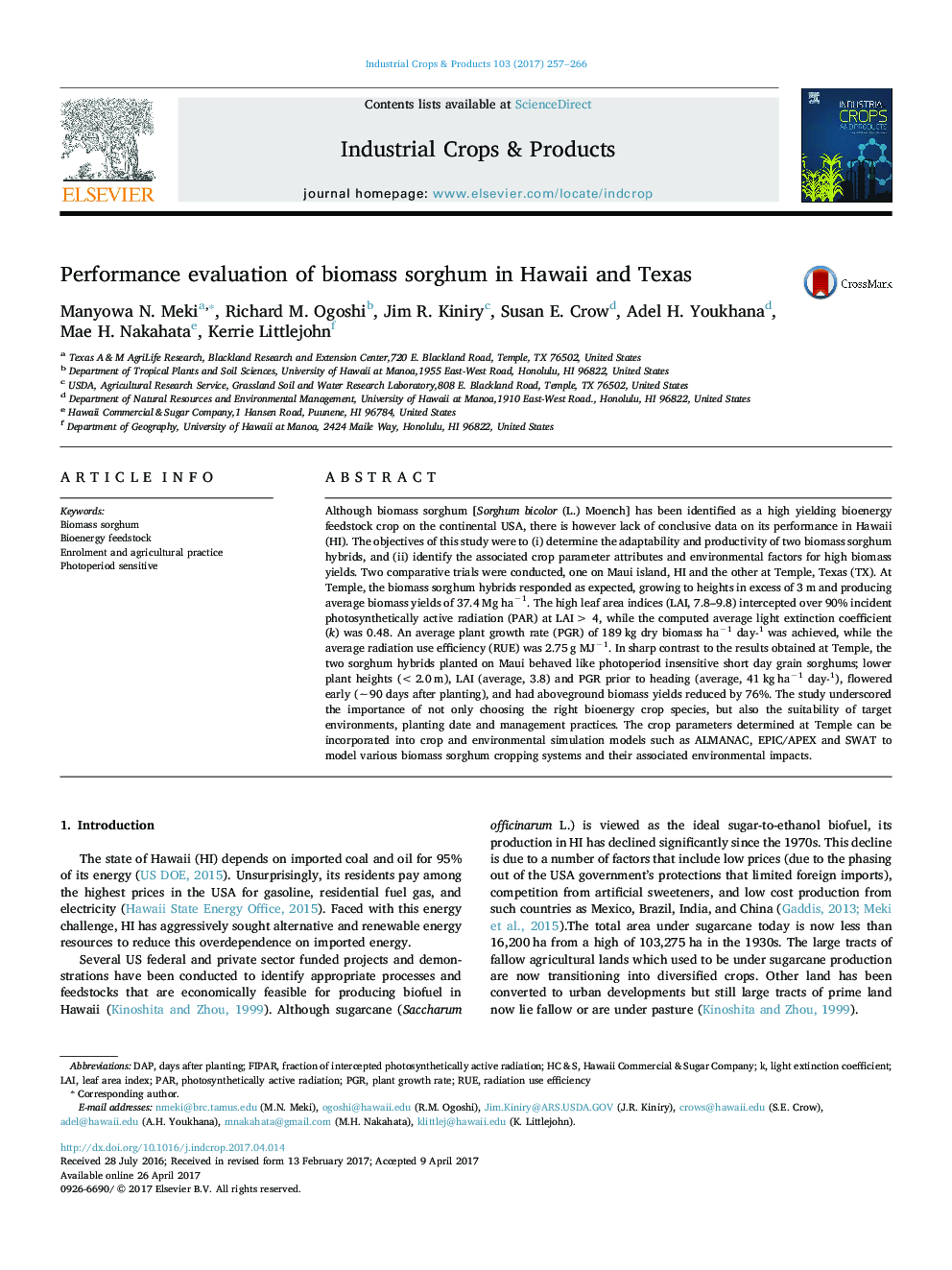| Article ID | Journal | Published Year | Pages | File Type |
|---|---|---|---|---|
| 5761934 | Industrial Crops and Products | 2017 | 10 Pages |
Abstract
Although biomass sorghum [Sorghum bicolor (L.) Moench] has been identified as a high yielding bioenergy feedstock crop on the continental USA, there is however lack of conclusive data on its performance in Hawaii (HI). The objectives of this study were to (i) determine the adaptability and productivity of two biomass sorghum hybrids, and (ii) identify the associated crop parameter attributes and environmental factors for high biomass yields. Two comparative trials were conducted, one on Maui island, HI and the other at Temple, Texas (TX). At Temple, the biomass sorghum hybrids responded as expected, growing to heights in excess of 3 m and producing average biomass yields of 37.4 Mg haâ1. The high leaf area indices (LAI, 7.8-9.8) intercepted over 90% incident photosynthetically active radiation (PAR) at LAI > 4, while the computed average light extinction coefficient (k) was 0.48. An average plant growth rate (PGR) of 189 kg dry biomass haâ1 day-1 was achieved, while the average radiation use efficiency (RUE) was 2.75 g MJâ1. In sharp contrast to the results obtained at Temple, the two sorghum hybrids planted on Maui behaved like photoperiod insensitive short day grain sorghums; lower plant heights (<2.0 m), LAI (average, 3.8) and PGR prior to heading (average, 41 kg haâ1 day-1), flowered early (â¼90 days after planting), and had aboveground biomass yields reduced by 76%. The study underscored the importance of not only choosing the right bioenergy crop species, but also the suitability of target environments, planting date and management practices. The crop parameters determined at Temple can be incorporated into crop and environmental simulation models such as ALMANAC, EPIC/APEX and SWAT to model various biomass sorghum cropping systems and their associated environmental impacts.
Keywords
Related Topics
Life Sciences
Agricultural and Biological Sciences
Agronomy and Crop Science
Authors
Manyowa N. Meki, Richard M. Ogoshi, Jim R. Kiniry, Susan E. Crow, Adel H. Youkhana, Mae H. Nakahata, Kerrie Littlejohn,
